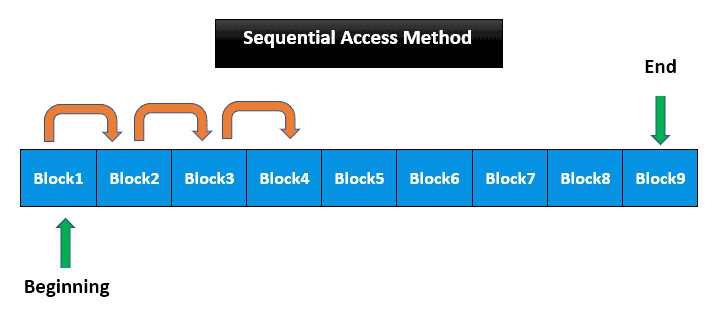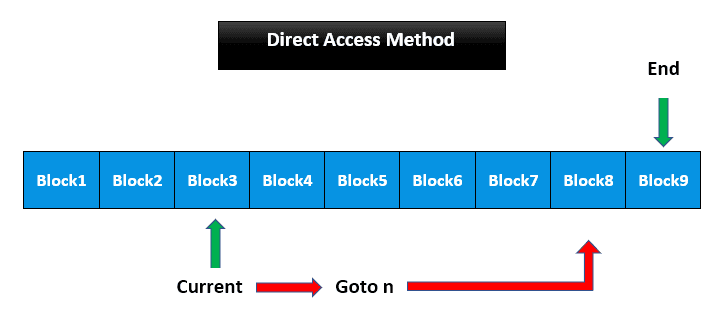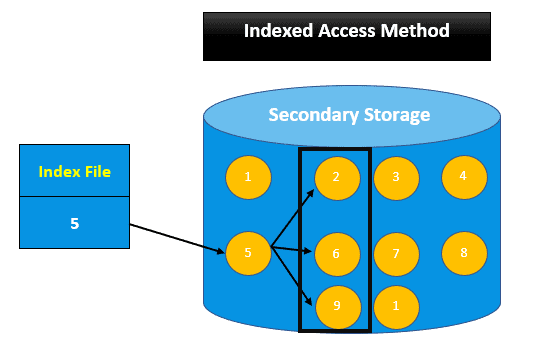1. Introduction
File access is a crucial aspect that we can consider while dealing with data. It refers to the methods and techniques employed to read and write data from files.
There are three main types of file access methods: sequential, direct, and indexed. Each method has its advantages and disadvantages. So, deciding on one or another depends on the type of application and the nature of the data accessed.
In this tutorial, we’ll investigate the three main file access methods, studying their advantages and disadvantages.
2. Sequential File Access
Sequential file access is the most straightforward method of accessing files. This method accesses data as one record at a time by starting from the beginning of the file to its end. Moreover, the records are read or written in the order they appear in the file.
Sequential file access is best suited for applications that linearly process data, such as reading or writing data to a log file or processing data in batch operations. For example, when analyzing a large dataset, it may be beneficial to write the data to a sequential file and then read it in one record at a time to perform the desired analysis.
The main advantage of sequential file access is its simplicity, which makes it easy to implement and use. In contrast, its main disadvantage is that it can be slow and inefficient for random access operations or when working with large files.
The following image depicts the sequential access method:

3. Direct File Access
Direct file access, also known as random access. It allows us to access data directly from any location within the file, without the need to read or write all the records that come before it. Furthermore, this method accesses records within the file by using their physical addresses or positions.
Direct file access is best suited for applications that require quick and efficient access to specific records or data elements within a file. For example, in a database application, we may need to quickly retrieve customer data based on a specific customer ID. Direct file access can quickly access the record containing the customer data without having to read through all the records that come before it.
The main advantage of direct file access is its speed and efficiency for random access operations. On the other hand, its main disadvantage is that it can be more complex and difficult to implement and use than sequential file access.
The following image depicts the direct access method:

4. Indexed File Access
Indexed file access is a method that incorporates the benefits of both sequential and direct file access. This method involves creating an index file that maps logical keys or data elements to their corresponding physical addresses within the file. Moreover, the system stores the index separately from the data file, enabling quick access to locate the desired data.
Indexed file access is best suited for applications that require fast access to particular data elements within a large file. For example, in a file system, we may need to access specific files based on their name or location. The index created for the file system allows quick access to the file’s physical location, enabling efficient access.
The main advantage of indexed file access is its speed and efficiency for random and sequential access operations. But, its main disadvantage is that it requires additional storage space for the index, which can increase the cost and complexity of the system.
The following image depicts the indexed access method:

5. Comparison of File Access Methods
The choice of file access should consider the specific needs of the application. Moreover, the three presented file access methods have unique characteristics, suited applications, advantages, and disadvantages. The following table summarizes the aspects of each method:
Method
Sequential File Access
Direct File Access
Indexed File Access
Access method
Accesses data one record at a time in sequential order from beginning to end
Accesses data directly from any location within the file, using physical addresses or positions
Uses an index that maps logical keys or data elements to their corresponding physical addresses within the file
Suited for
Applications that process data in a linear fashion, such as reading or writing data to a log file or processing data in batch operations
Applications that require quick and efficient access to specific records or data elements within a file
Applications that require fast and efficient access to specific data elements within a large file
Advantages
Simplicity and ease of implementation and use
Speed and efficiency for random access operations
Speed and efficiency for both random and sequential access operations
Disadvantages
Slow and inefficient for random access operations or when working with large files
More complex and difficult to implement and use than sequential file access
Requires additional storage space for the index, which can increase the cost and complexity of the system
6. Conclusion
In conclusion, file access methods play a critical role in data management and processing for software applications.
Furthermore, the choice of sequential, direct, or indexed file access method depends on the specific application requirements, including the size and nature of the data being processed.